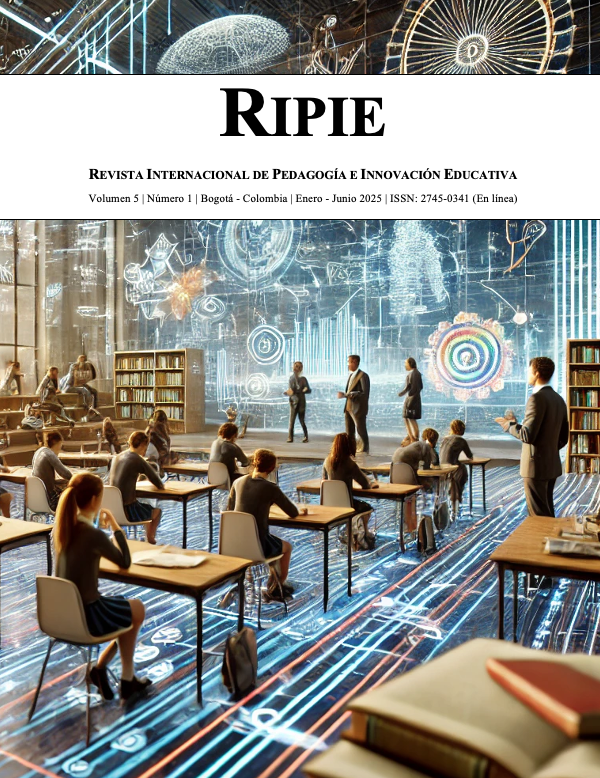Reading, body and knowledge through books
DOI:
https://doi.org/10.51660/ripie51239Keywords:
reading, body interaction, knowledge, identityAbstract
This article explores the interrelationship between reading, the body and the construction of knowledge through books. Based on a systematic literature review, it analyzes how reading is not only a cognitive act, but also a bodily experience that involves sensory and emotional aspects. Studies that address the materiality of the book, body posture, and the impact of reading on the brain and memory are reviewed. In addition, the way in which the body actively participates in the comprehension process and how this interaction contributes to the creation of knowledge is highlighted. From this review, implications for the promotion of reading in an increasingly digitized context are discussed. The results suggest that the act of reading, in its physical dimension, is fundamental for cognitive and emotional development, and that books, as objects, remain a vital vehicle for knowledge.
Downloads
References
Adams, M. J. (2019). The role of language in reading development: A cognitive and behavioral perspective. Journal of Learning Disabilities, 52(2), 104–116.
Barad, K. (2007). Meeting the universe halfway: Quantum physics and the entanglement of matter and meaning. Duke University Press.
Baron, N. S. (2015). Words onscreen: The fate of reading in a digital world. Oxford University Press.
Borsuk, A. (2018). The book. MIT Press.
Coiro, J., & Dobler, E. (2007). Exploring the online reading comprehension strategies of students. Journal of Adolescent & Adult Literacy, 50(6), 462–470.
Dehaene, S. (2009). Reading in the brain: The science and evolution of a human invention. Viking Press.
Guthrie, J. T., & Wigfield, A. (2000). Engagement and motivation in reading. In M. L. Kamil, P. B. Mosenthal, P. D. Pearson, & R. Barr (Eds.), Handbook of reading research (Vol. 3, pp. 403–422). Routledge.
Hayles, N. K. (2002). Writing machines. MIT Press.
Kintsch, W. (1998). Comprehension: A paradigm for cognition. In M. A. Gernsbacher (Ed.), Handbook of psycholinguistics (pp. 373–412). Academic Press.
Kühn, S., & Gallinat, J. (2014). Reading books versus listening to audiobooks: Effects on the mentalizing network and default mode network. Journal of Cognitive Neuroscience, 26(10), 1–12. https://doi.org/10.1162/jocn_a_00553
Liu, Z. (2005). Reading behavior in the digital environment: Changes in reading behavior over the past ten years. Journal of Documentation, 61(6), 700–712. https://doi.org/10.1108/00220410510632040
Mangen, A. (2013). The digitization of literary reading: Contributions from empirical research. Nordic Journal of Digital Literacy, 8(3), 115–127.
Mangen, A., Walgermo, B. R., & Brønnick, K. (2013). Reading linear texts on paper versus computer screen: Effects on reading comprehension. International Journal of Educational Research, 58, 61–68. https://doi.org/10.1016/j.ijer.2012.12.002
Miller, D. (2009). The book whisperer: Awakening the inner reader in every child. Jossey-Bass.
Nielsen, K. (2018). The body in the classroom: On the role of the body in learning. Journal of Philosophy of Education, 52(1), 75–90.
Rosenblatt, L. M. (1994). The reader, the text, the poem: The transactional theory of the literary work. Southern Illinois University Press.
Stanovich, K. E. (2000). Progress in understanding reading: Scientific foundations and new frontiers. Guilford Press.
Sullivan, A. (2013). Reading for pleasure: A protective factor against psychological distress and impairment. The Journal of Lifelong Learning, 19(2), 75–87.
Wolf, M. (2007). Proust and the squid: The story and science of the reading brain. HarperCollins.
Downloads
Published
Issue
Section
License
Copyright (c) 2025 International Journal of Pedagogy and Educational Innovation

This work is licensed under a Creative Commons Attribution-NonCommercial-ShareAlike 4.0 International License.
Articles are published under the terms of a licence that permits use, distribution and reproduction in any medium, provided that the original work is properly cited. Ed&TIC retains the proprietary rights to the published works and actively promotes the reuse of these works under the terms of the aforementioned licence, which encourages the dissemination of knowledge and collaboration in the academic community.


